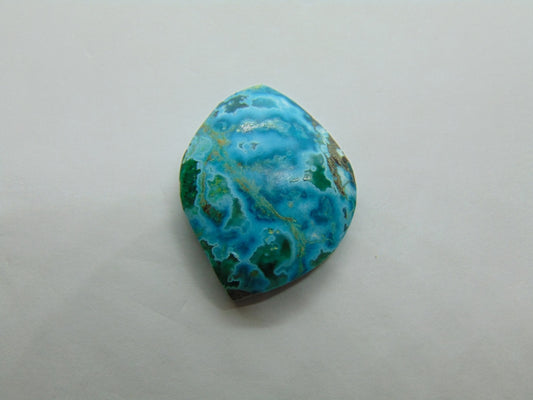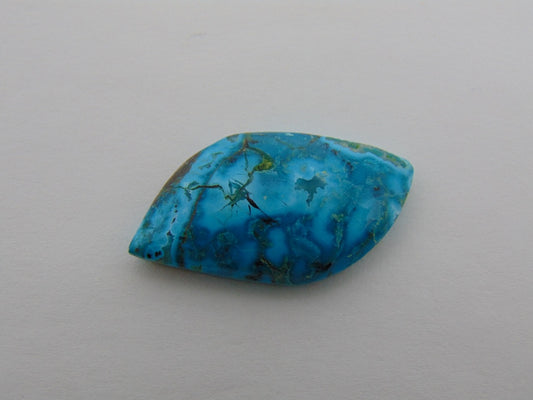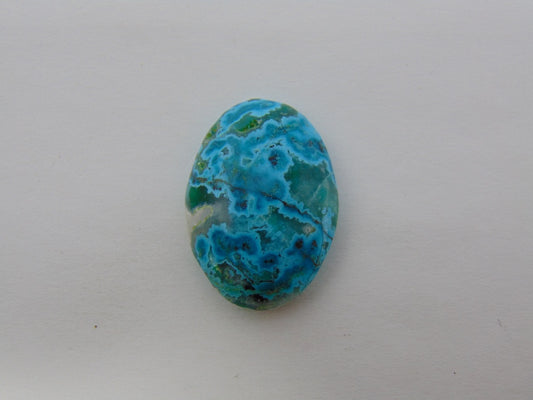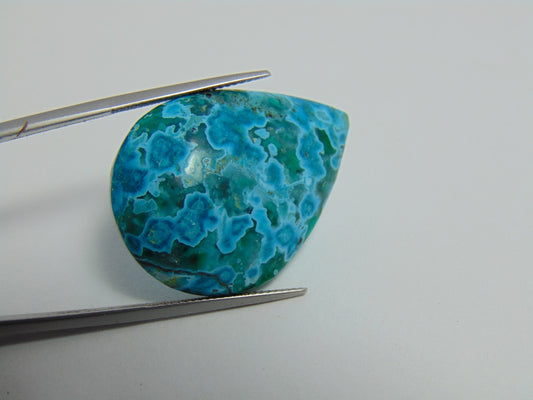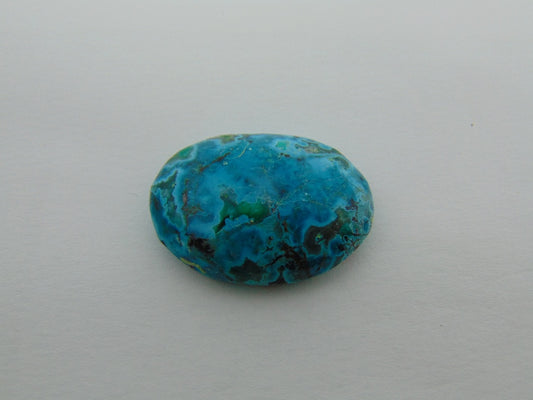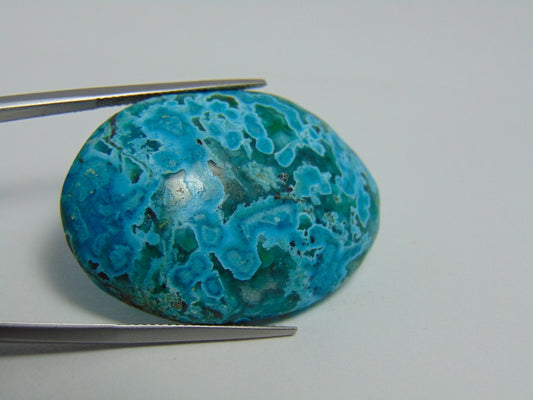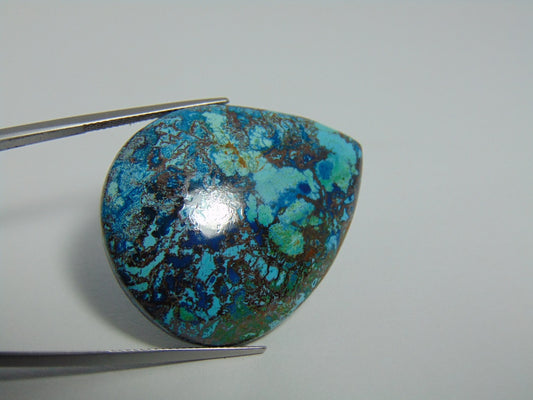Collection: CHRYSOCOLLA
Chrysocolla is a hydrated copper phyllosilicate mineral with formula: Cu2-xAlx(H2-xSi2O5)(OH)4·nH2O (x<1)[1] or (Cu,Al)2H2Si2O5(OH)4·nH2O.[2] The structure of the mineral has been questioned, as spectrographic studies suggest material identified as chrysocolla may be a mixture of the copper hydroxide spertiniite and chalcedony.
The name comes from the Greek chrysos, "gold", and kolla, "glue", in allusion to the name of the material used to solder gold, and was first used by Theophrastus in 315 BCE.
It is typically found as botryoidal or rounded masses and crusts, or vein fillings. Because of its light color, it is sometimes confused with turquoise.
Notable occurrences include Bacan Island Indonesia, Israel, Democratic Republic of Congo, Chile, Cornwall in England, and Arizona, Utah, Idaho, New Mexico, Michigan, and Pennsylvania in the United States.
The name comes from the Greek chrysos, "gold", and kolla, "glue", in allusion to the name of the material used to solder gold, and was first used by Theophrastus in 315 BCE.
It is typically found as botryoidal or rounded masses and crusts, or vein fillings. Because of its light color, it is sometimes confused with turquoise.
Notable occurrences include Bacan Island Indonesia, Israel, Democratic Republic of Congo, Chile, Cornwall in England, and Arizona, Utah, Idaho, New Mexico, Michigan, and Pennsylvania in the United States.
-
107ct Chrysocolla (Pair)
Regular price $53.54 USDRegular price -
23.70ct Chrysocolla 27x21mm
Regular price $23.70 USDRegular price -
34.10ct Chrysocolla 38x20mm
Regular price $30.69 USDRegular price -
34.10cts Chrysocolla
Regular price $34.10 USDRegular price -
35.60ct Chrysocolla 32x24mm
Regular price $35.60 USDRegular price -
38.50ct Chrysocolla 32x24mm
Regular price $38.50 USDRegular price -
39.50ct Chrysocolla
Regular price $19.75 USDRegular price -
42.50ct Chrysocolla 40x22mm
Regular price $25.50 USDRegular price -
43.50cts Chrysocolla
Regular price $43.50 USDRegular price -
50.50ct Chrysocolla
Regular price $50.50 USDRegular price -
53cts Chrysocolla
Regular price $53.00 USDRegular price -
54.30cts Chrysocolla
Regular price $48.87 USDRegular price -
54.40cts Chrysocolla
Regular price $54.40 USDRegular price -
55.40ct Chrysocolla
Regular price $49.86 USDRegular price -
56.50cts Chrysocolla
Regular price $56.50 USDRegular price -
61.80ct Chrysocolla 45x25mm
Regular price $61.80 USDRegular price -
63.80cts Chrysocolla
Regular price $63.80 USDRegular price -
70.50cts Chrysocolla
Regular price $70.50 USDRegular price -
72.50cts Chrysocolla
Regular price $72.50 USDRegular price


